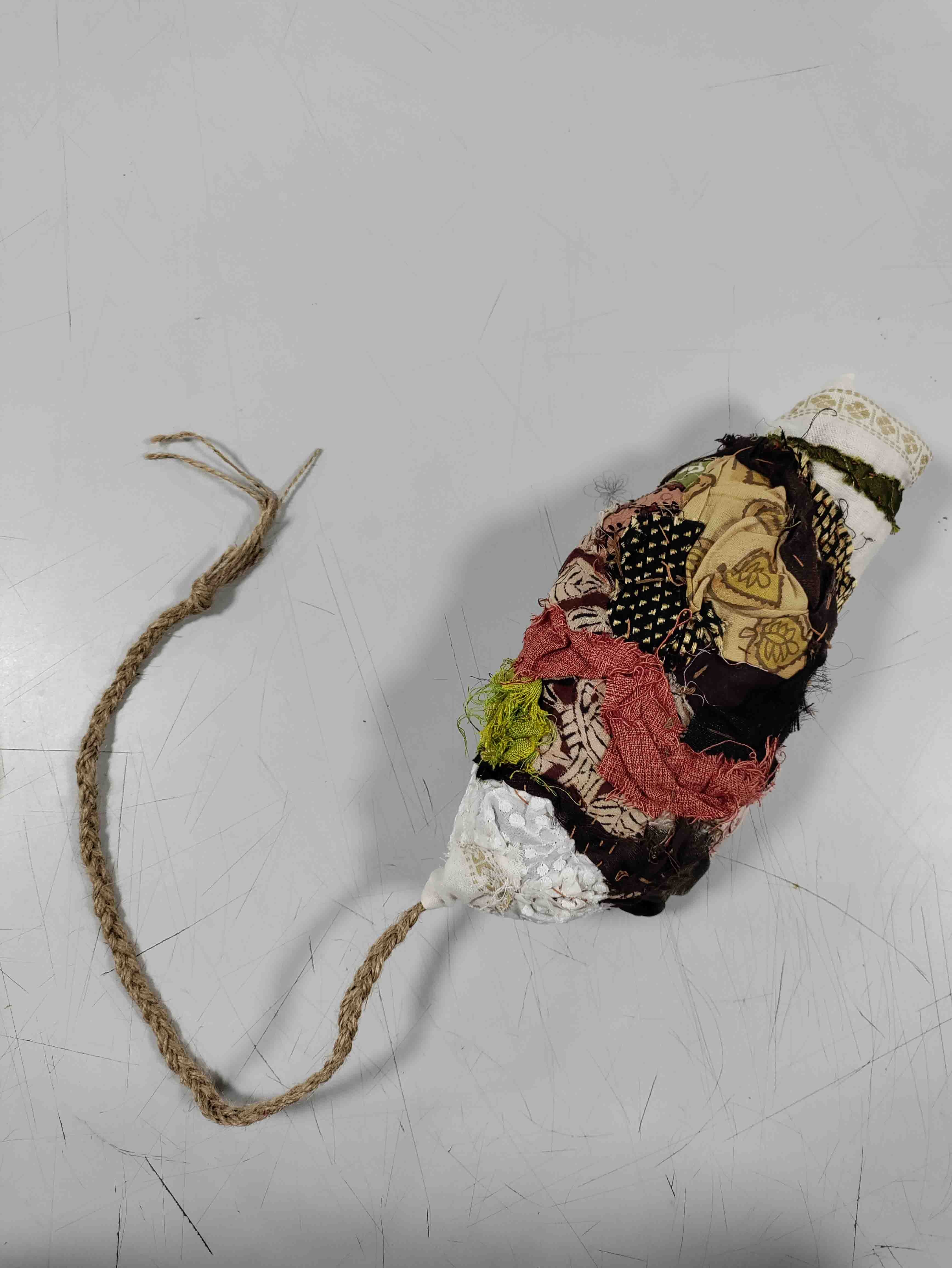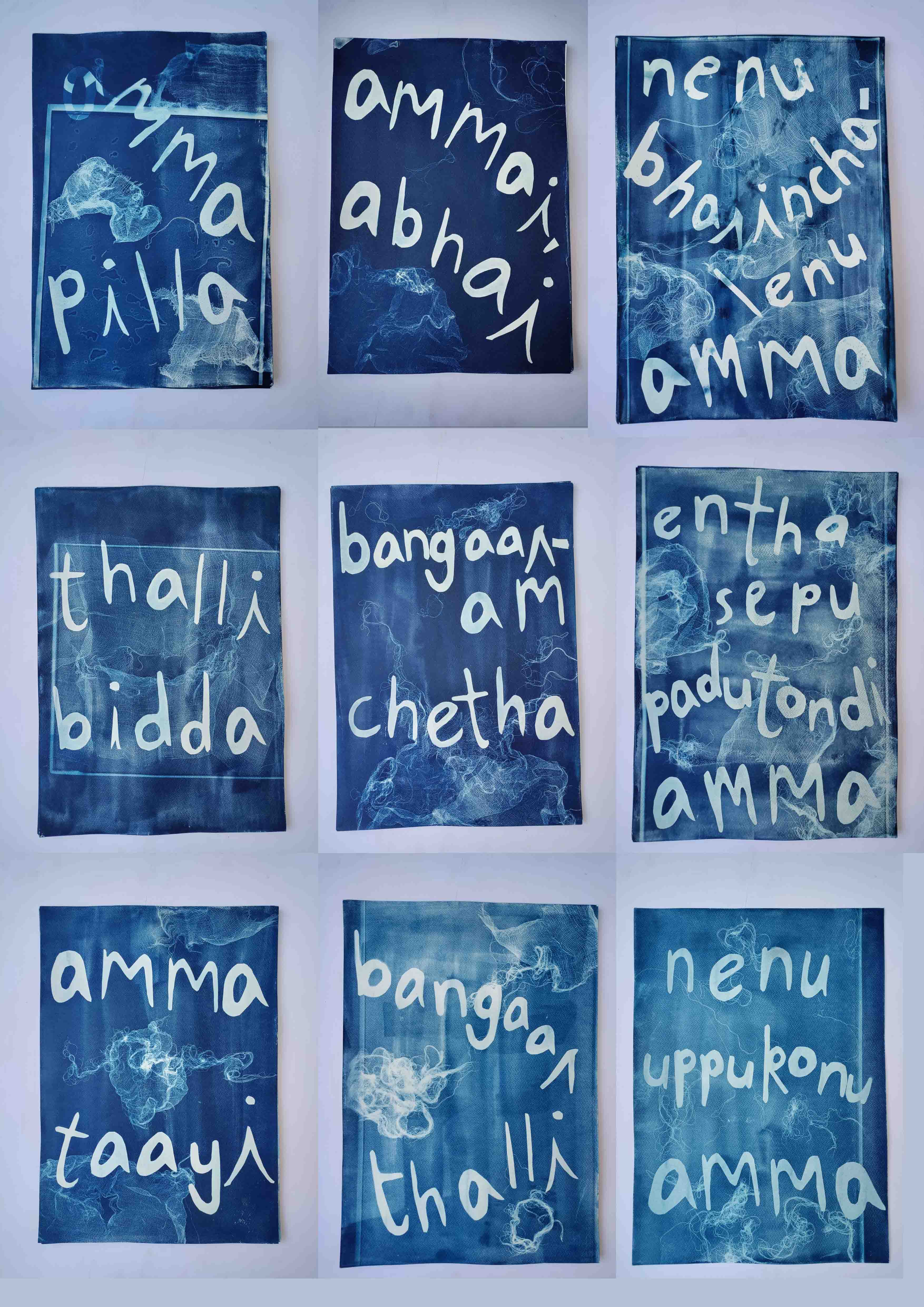Contemporary Art Practice
My creative practice is centred around embodiment. With the slowness of time and generosity of space, how can art embolden, sharpen, guide, radicalise, comfort, liberate? This is what I ask myself, and what I ask for my community of peers who I make work for, that my work is inspired by—the queer, trans, and disabled-neurodivergent. My goal is for my audience to be embodied when engaging with my work—I want them to experience multiple sensations and explore their sensitivity, such as in “Keyword: Sensitivity,” an essay which connected my autistic sensitivity with institutional disruption, and in “Bird’s Nest (from my window)” which invited the audience to encounter change-over-time texturally through the creation and destruction of a soft sculpture of a bird’s nest. “amma/pilla” was created as a letter in Telugu to work through an argument with my mother, where I learned that she would not be able to accept me as a transgender person. The visual textures of the shades of blue, shredded gauze and handmade letterforms allow the viewer to ‘sound out’ an understanding of the work on their own, mirroring the embodied knowledge of language as an intuitive, living practice. Embodiment means using emotion to bring clarity to your worldview, to allow the bodymind to guide how we move with and against structure. It teaches us to pay attention to the transparency between the internal and the external worlds, and to bridge that gap in our actions.
The question of embodiment arose in my first class at the Just Futures Co Lab, stewarded by Dr. Kush Patel. In the introduction to the Lab, Kush spoke about “embodied research” as integral to the work of the lab. This term both confused and excited me. Hearing it felt like I had a metal detector that had detected something big and important under the sand, but I couldn’t see it or understand it yet. I just had to keep digging and feeling its contours and work around it to gain an understanding of what it meant to embody something. Embodiment suggested being moved within your body to study something, to be guided in your bones to what needed attention. This is how I’ve been drawn to my research interests before, but what the Lab has taught me is that embodiment is not only rooted in the body, it is rooted in practice. It is rooted in putting your politics in action. It is rooted in being moved to create, act, and resist. The bodymind—non dualistic, sensitive, embodied—can guide us to resist against oppressive structures, to collectivise, and to make. My journey in the PGDP program was learning to view myself and the world not as discrete identities but as variables and processes that influence and direct each other—blurring the within and the without.
@porcupado



